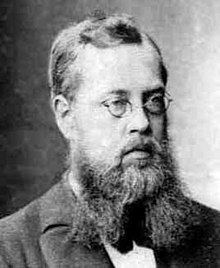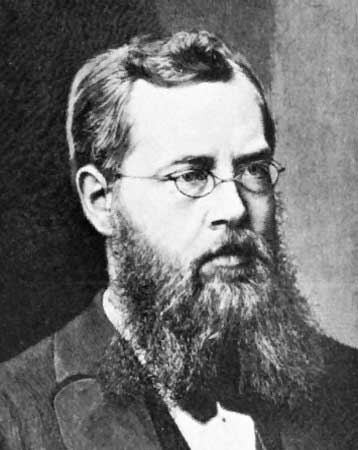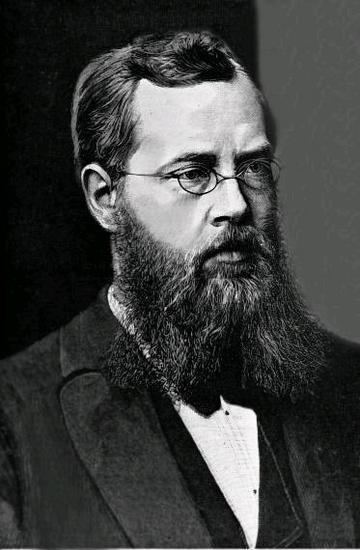Nationality Norwegian Role Mathematician | Name Sophus Lie Known for See full list | |
 | ||
Born 17 December 1842Nordfjordeid, Norway ( 1842-12-17 ) Doctoral advisor Carl Anton BjerknesCato Maximilian Guldberg Doctoral students Hans BlichfeldtLucjan Emil BottcherGerhard KowalewskiKazimierz Zorawski Died February 18, 1899, Oslo, Norway Books Theorie der transformationsgruppen . Similar People Elie Cartan, Felix Klein, Niels Henrik Abel, Peter Ludwig Mejdell S, Evariste Galois | ||
Sophus Lie
Marius Sophus Lie ( ; [liː]; 17 December 1842 – 18 February 1899) was a Norwegian mathematician. He largely created the theory of continuous symmetry and applied it to the study of geometry and differential equations.
Contents

Math 187 Presentation Sophus Lie
Biography

His first mathematical work, Repräsentation der Imaginären der Plangeometrie, was published, in 1869, by the Academy of Sciences in Christiania and also by Crelle's Journal. That same year he received a scholarship and traveled to Berlin, where he stayed from September to February 1870. There, he met Felix Klein and they became close friends. When he left Berlin, Lie traveled to Paris, where he was joined by Klein two months later. There, they met Camille Jordan and Gaston Darboux. But on 19 July 1870 the Franco-Prussian War began and Klein (who was Prussian) had to leave France very quickly. Lie left for Fontainebleau where after a while he was arrested under suspicion of being a German spy, an event that made him famous in Norway. He was released from prison after a month, thanks to the intervention of Darboux.

Lie obtained his PhD at the University of Christiania (present day Oslo) in 1871 with a thesis entitled On a class of geometric transformations. It would be described by Darboux as “one of the most handsome discoveries of modern Geometry”. The next year, the Norwegian Parliament established an extraordinary professorship for him. That same year, Lie visited Klein, who was then at Erlangen and working on the Erlangen program.
At the end of 1872, Sophus Lie proposed to Anna Birch, then eighteen years old, and they were married in 1874. The couple had three children: Marie (b. 1877), Dagny (b. 1880) and Herman (b. 1884).
In 1884, Friedrich Engel arrived at Christiania to help him, with the support of Klein and Adolph Mayer (who were both professors at Leipzig, by then). Engel would help Lie to write his most important treatise, Theorie der Transformationsgruppen, published in Leipzig in three volumes from 1888 to 1893. Decades later, Engel would also be one of the two editors of Lie's collected works.
In 1886 Lie became professor at Leipzig, replacing Klein, who had moved to Göttingen. In November 1889, Lie suffered a mental breakdown and had to be hospitalized until June 1890. After that, he returned to his post, but over the years his anaemia progressed to the point where he decided to return to his homeland. Consequently, in 1898 he tendered his resignation in May, and left for home (for good) in September the same year. He died the following year, 1899.
He was made Honorary Member of the London Mathematical Society in 1878, Member of the French Academy of Sciences in 1892, Foreign Member of the Royal Society of London in 1895 and foreign associate of the National Academy of Sciences of the United States of America in 1895.
Sophus Lie died at the age of 56, due to pernicious anemia, a disease caused by impaired absorption of vitamin B12.
Legacy
Lie's principal tool, and one of his greatest achievements, was the discovery that continuous transformation groups (now called, after him, Lie groups) could be better understood by "linearizing" them, and studying the corresponding generating vector fields (the so-called infinitesimal generators). The generators are subject to a linearized version of the group law, now called the commutator bracket, and have the structure of what is today called a Lie algebra.
Hermann Weyl used Lie's work on group theory in his papers from 1922 and 1923, and Lie groups today play a role in quantum mechanics. However, the subject of Lie groups as it is studied today is vastly different from what the research by Sophus Lie was about and “among the 19th century masters, Lie's work is in detail certainly the least known today”.
